What happens to steak when it is grilled on a 2cm thick block of salt?

The rock salt plate , which allows you to cook delicious food just by placing unseasoned meat, fish, vegetables, etc. on it,
The reason why I suddenly decided to grill meat on a rock salt plate was because I saw a row of rock salt plates on display at Costco. I had the impression that Himalayan pink salt was expensive, but the plate was 1.7 kg and included herbs and spices for 2,280 yen. I had to buy it! So I bought it immediately.
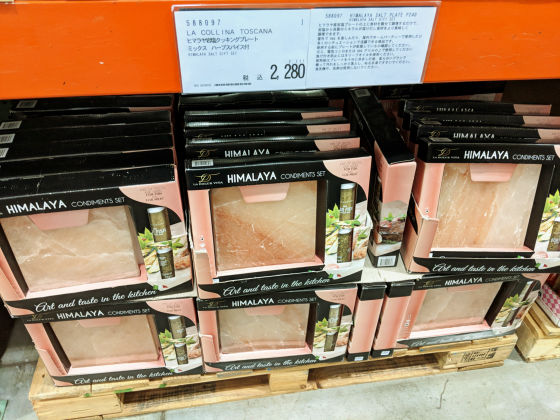
This is the Himalayan rock salt cooking plate I purchased. It was imported from Italy.
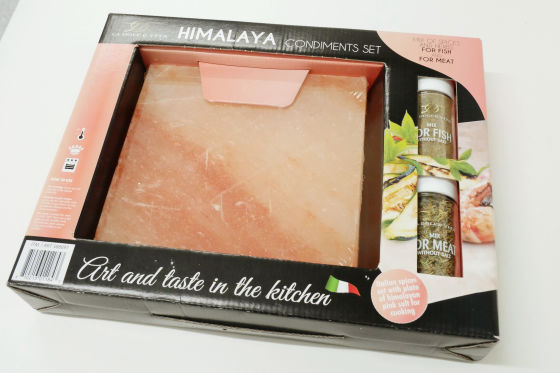
Inside the box is one rock salt plate and one each of spices for meat and fish.
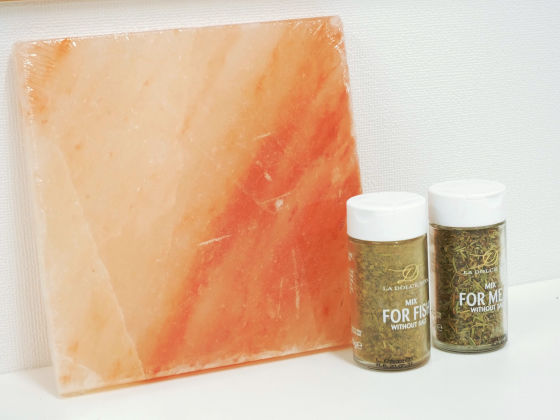
When I measured it, the rock salt plate weighed 1,727g.
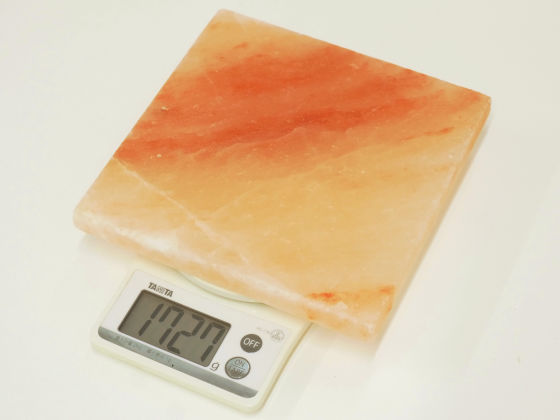
The size is about 19.5cm to 19.8cm on each side. If you hold it with one hand, your hand will shake.
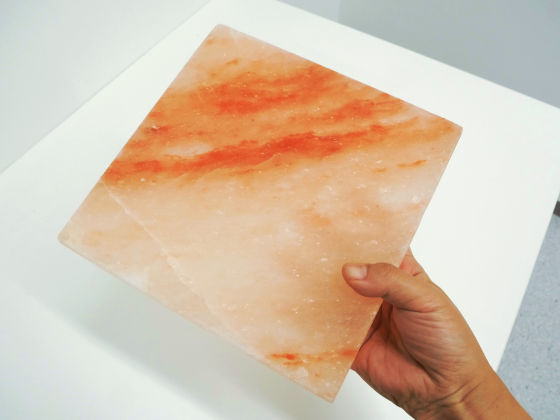
It is 2cm thick.
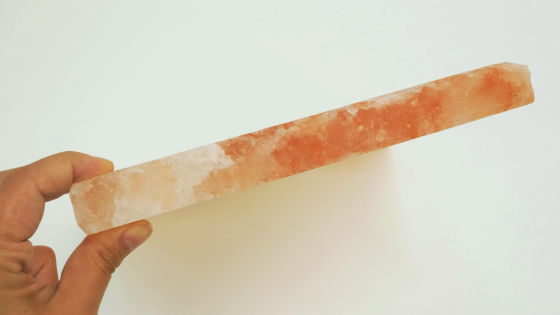
It has a beautiful pink marbled pattern like marble, but since it is rock salt, the surface is rough.
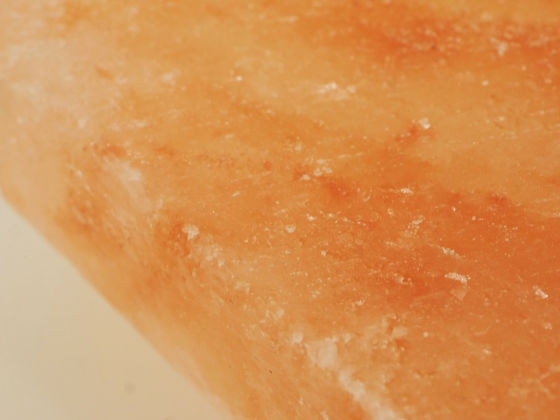
The back of the box had instructions on how to use it. It can be used on gas, electric stoves, and BBQ grills, and when using an electric stove, you need to use a grill grate or something similar, leaving about 1.3 cm of space between the grill and the grill. It also says to use it in a completely dry place, and not to use a dishwasher or detergent.
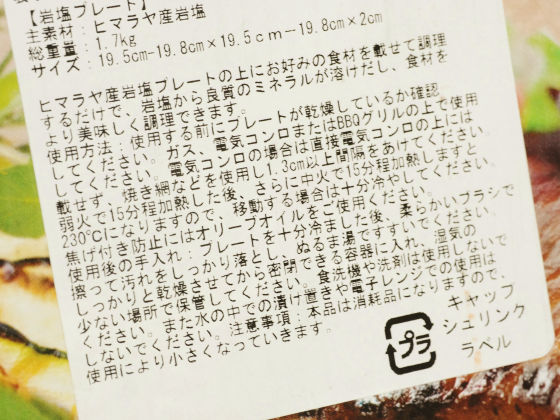
So I decided to buy some vegetables, meat, fish, etc. and try them out.
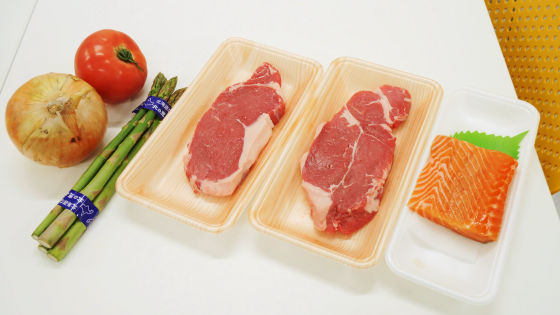
This time, we will be using it on a gas stove, so we will simply place the rock salt plate on top of the trivet.
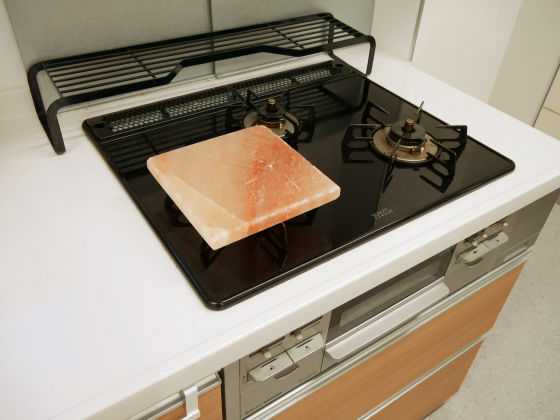
It is very important to heat the rock salt plate slowly, and the instructions said to heat it '15 minutes on low heat, 15 minutes on medium heat,' so I started by turning it on low heat. Other manufacturers also sell rock salt plates, and
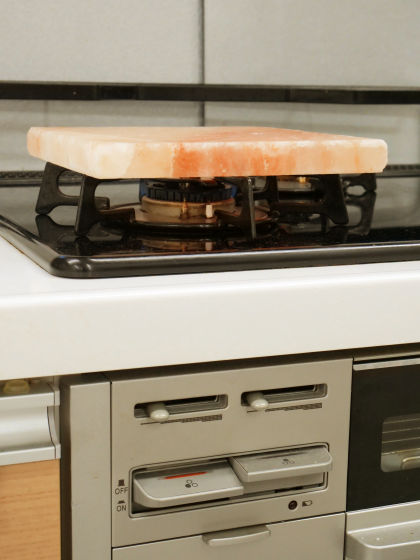
I left it for a while while checking the temperature of the surface of the plate using
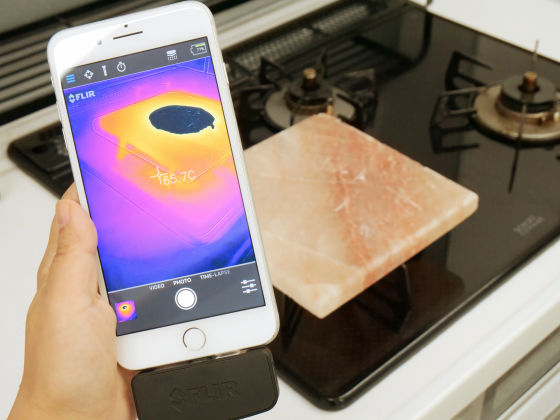
Next, prepare the meat. I looked into it after reading some reviews of the smaller Logos
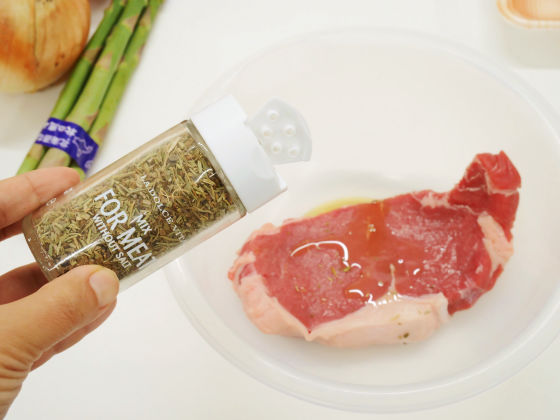
After 15 minutes on low heat, heat for an additional 15 minutes on medium heat.

However, when I checked with the FLIR ONE, the temperature had stopped at 150 degrees. In fact, the safety sensor installed in the stove was activated and automatically switched to low heat halfway through, so the temperature of the surface of the plate did not rise to a high temperature even though the back of the plate was hot.
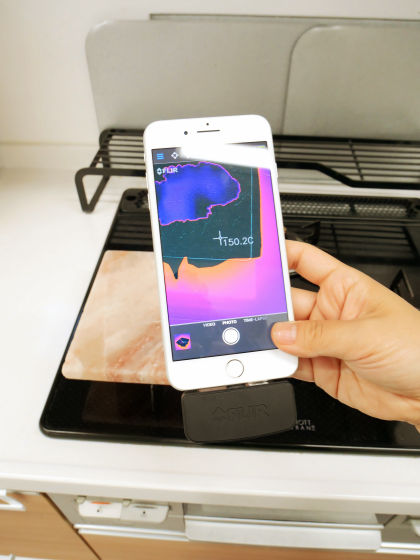
That's where the portable stove without a safety sensor comes in. We were advised that 'if you put a grill on it, the plate will heat evenly,' so we put a grill on it this time. However, we also received feedback that the rock salt plate 'broke during use,' so it can be said that putting a grill on it is safer.
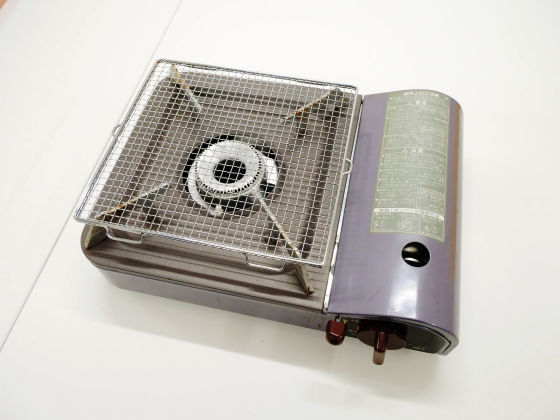
Boom!
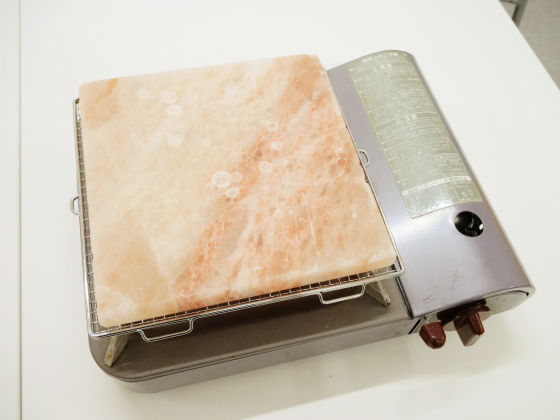
Start with low heat and heat slowly for 15 minutes.
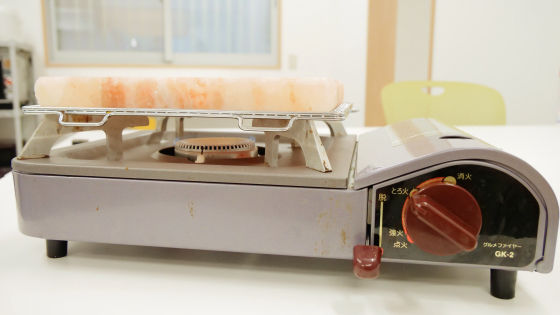
Then turn up the heat a little...
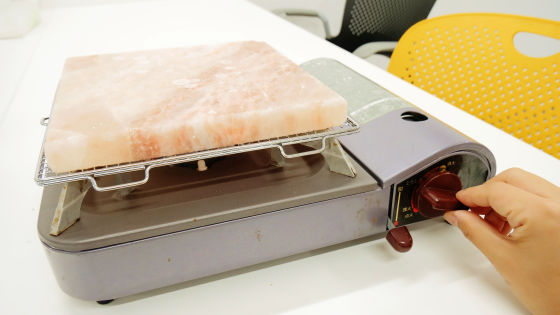
Another 15 minutes.

When I measured it with

Apply oil to the surface of the plate ......
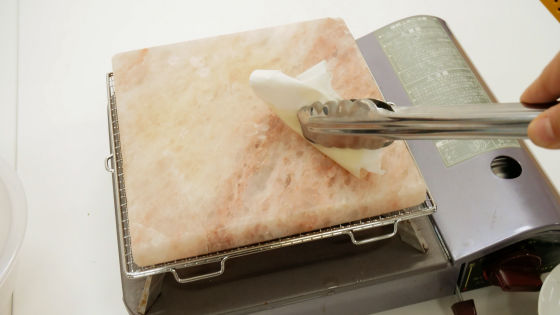
Now we are going to grill the meat. At this time, you need to use metal tongs instead of plastic ones because the plate is very hot.
When you place the meat on the rock salt plate, you can hear a nice sizzling sound. Grill one side for 2 minutes...
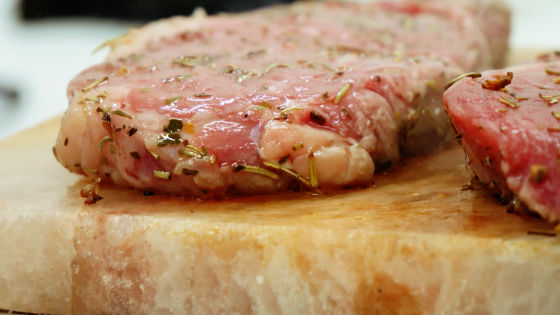
Flip the meat over and cook the other side for about 3 minutes. Of the two pieces, the one on the left is coated with oil and the one on the right is not. Check to see if there is a difference in the finished product.
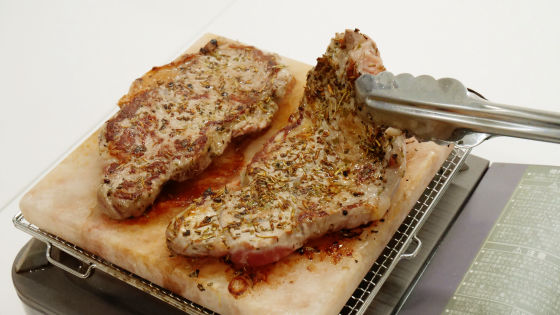
So I took the meat off the plate...
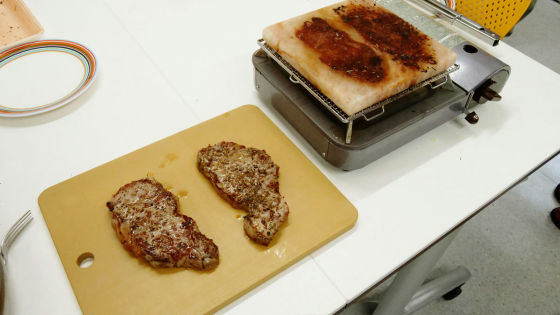
First, I tried the one covered in oil, and it didn't taste too salty, but rather it was only slightly salty. Also, unlike regular salt, it has a mild saltiness and is not too sharp, so it does a good job of bringing out the flavor of the ingredients and allowing you to enjoy the flavor of the ingredients. On the other hand, it seemed like the quality of the meat you were cooking would affect the final result. This time, I cooked lean Australian sirloin, and perhaps due to the far-infrared effect, the meat was soft and juicy, oozing with juice, even though it was thoroughly cooked through.
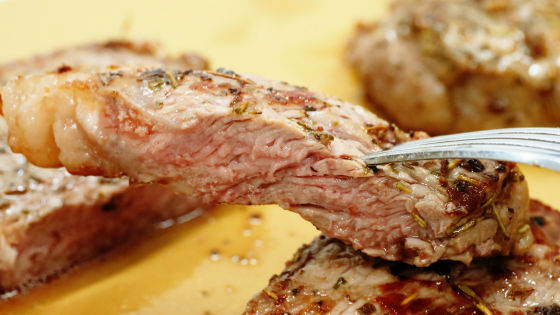
I also tried it without oiling it, and there wasn't much difference. I cooked it for 2 minutes on the front and 3 minutes on the back, and it was somewhere between well done and medium, so if you like it rare, you can just adjust the cooking time.
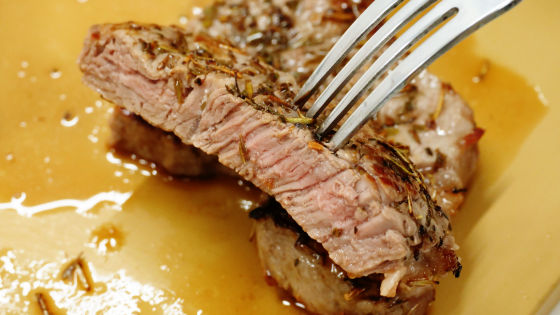
After cooking, the beautiful marble-like rock salt plate turned black where the meat was grilled. The plate is very hot immediately after use, so leave it to cool for a while. After about an hour, it will drop below 50 degrees and you will be able to handle it with your hands.

There was a clear crack on the surface that we could see often. This crack penetrated to the back side, so it makes sense that 'the plate broke during cooking.'
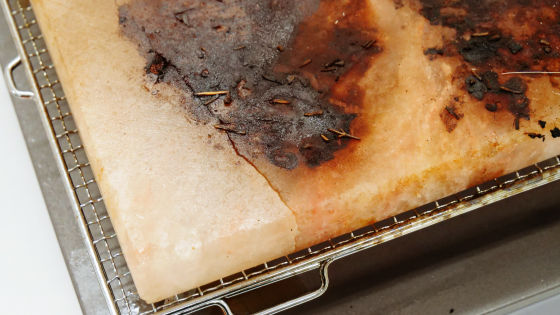
The instructions and
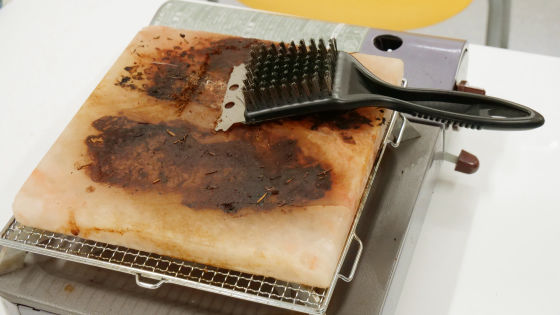
Roughly remove any burnt parts with the spatula ...
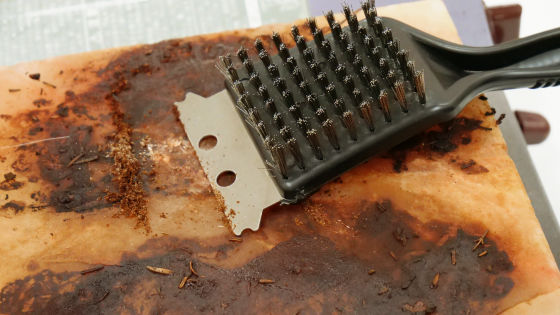
Scrub with a metal brush. The metal brush was particularly effective at removing burnt bits, as it scraped off the rock salt.
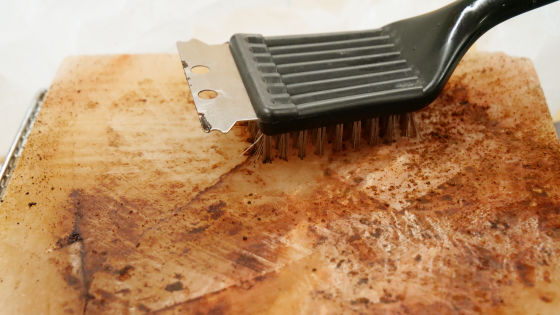
Here's what it looks like after cleaning. It's pretty much back to its original state, but...
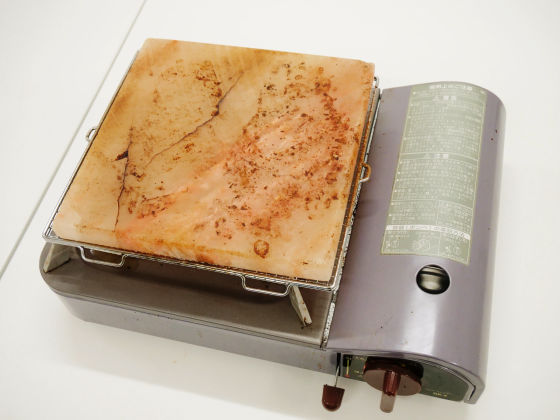
What bothers me is the large cracks on the surface.
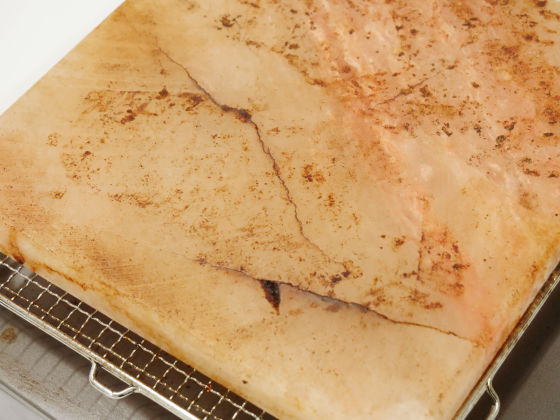
Perhaps cleaning the fish had scraped off the surface, making it taste even saltier? To confirm this, I heated the fish again on low heat for 15 minutes and then on medium heat for 15 minutes.
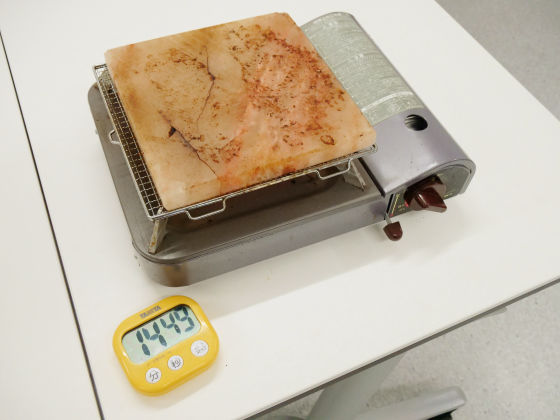
I'm going to grill the meat. This time I cut it in half and coated one half with oil and left the other half without oil. There was no oil on the plate itself, but the oil from the first cooking session was still there, and oil was floating on the surface as it heated up.
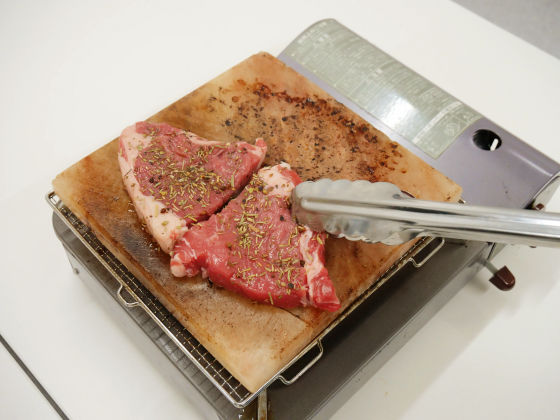
The steak is done.
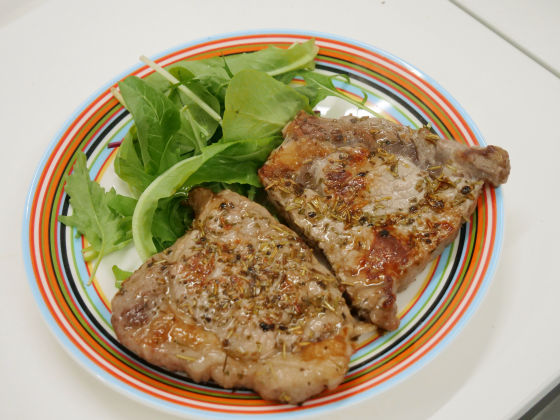
Both flavors were stronger than the first time, but when we tried them with and without oil, we could clearly feel the difference, and when we asked several editorial staff to try them, they all unanimously agreed that 'the one without oil was saltier!'
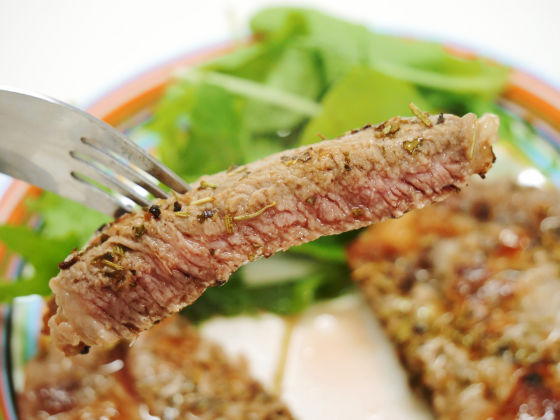
I also bought some loin and belly meat for yakiniku.
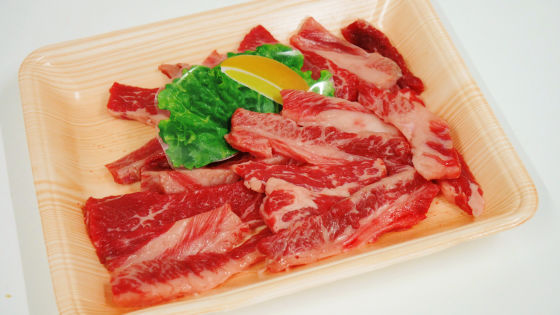
Without going through the cleaning process, we started grilling on the rock salt plate as it was.
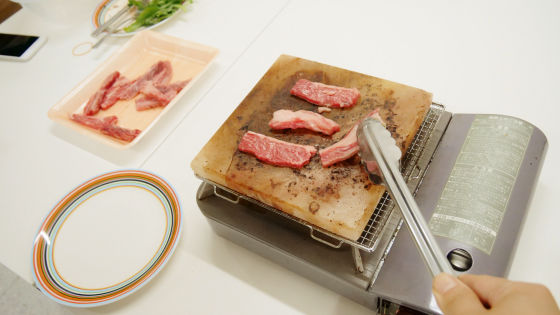
For comparison, I also tried cooking in a frying pan without any seasoning.
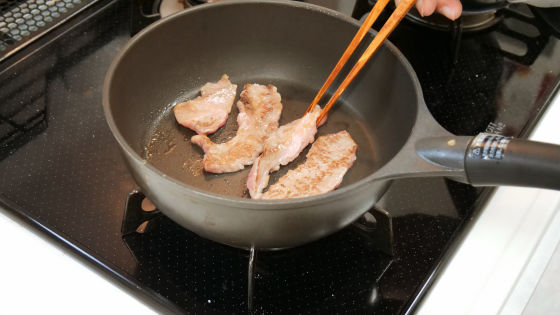
It will have a nice sizzling texture and brown marks.
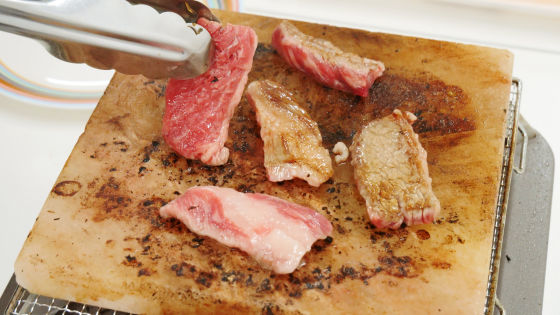
So we compared the taste of meat grilled on a rock salt plate (left) with meat grilled in a frying pan (right).
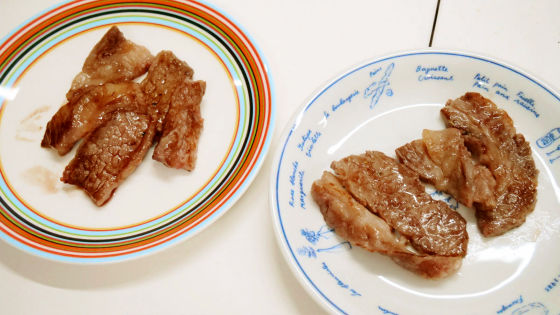
The thinner steak tasted saltier than the thicker steak, and the mild, perfectly seasoned taste made people exclaim, 'This is delicious!' I tried grilling it several times, and the saltiness became more pronounced with each turn, so it seemed OK to grill it continuously without worrying about a little bit of burning. There was no need to compare it to the grilled meat for comparison, as it was well seasoned.
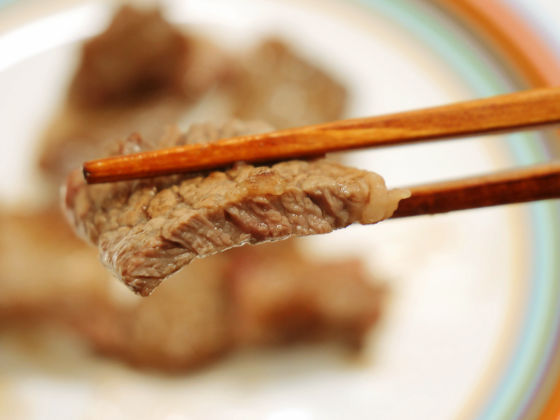
I also grilled tomatoes and onions.
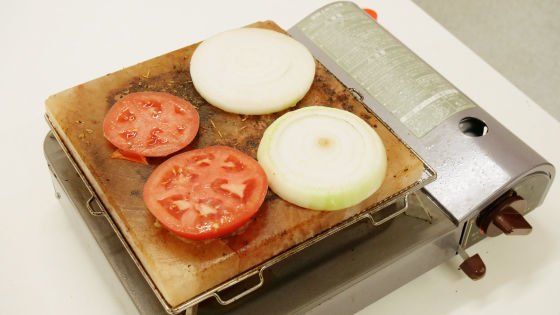
However, vegetables with a high water content tend to dissolve the plate while cooking and absorb the salt, making them quite salty. However, even though they were salty, they were mildly salty, making them easy to eat.
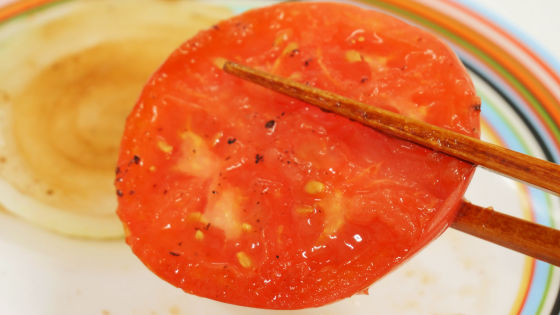
I tried cleaning the rock salt plate when it was warm, but the oil stains were sticky and I couldn't remove them properly, so I recommend letting it cool before cleaning it. I removed only the most noticeable burnt spots...
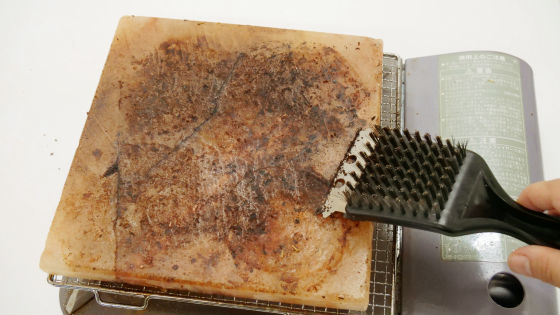
Next time I'll try grilling salmon.

The salmon was also soft from the outside to the inside, plump and juicy. However, perhaps because the salmon was too thick or fatty, the flavor wasn't so good that it could be called 'exquisite.' Thinly sliced salmon would probably be better.
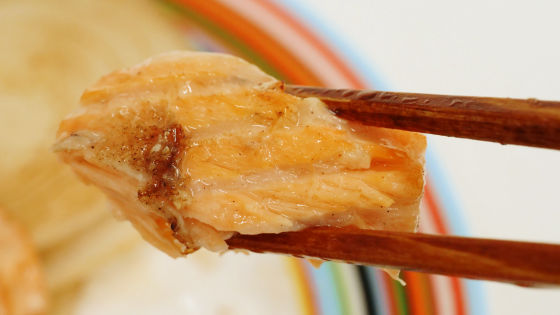
Next, since vegetables with a high water content tend to be too salty, I tried coating the vegetables themselves in oil before grilling them. This time, I grilled them for 1-2 minutes on each side, depending on how thick you slice them.
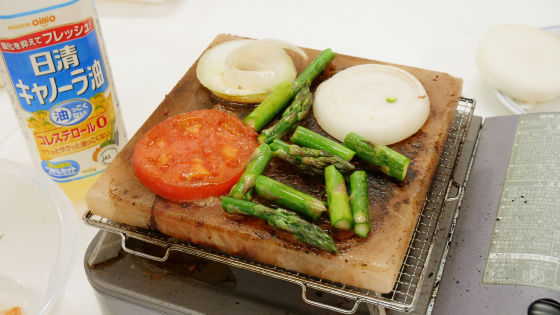
The tomatoes and onions are not as salty as the previous ones, and have just the right amount of saltiness to go with alcohol. The balance of sweetness and saltiness of the tomatoes in particular makes you wonder if they could be used as a tomato sauce as is, and depending on how you cook them, they can bring out the sweetness and umami of the vegetables and be delicious.

Asparagus can also be eaten without any seasoning.
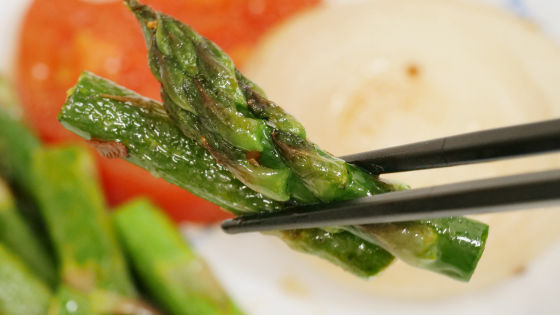
In response to the editorial staff's request to 'eat grilled rice balls,' we tried an experiment with rice balls with oil on the surface.

This was a failure. Because the rice was sticky, the flavored part came off the moment I turned it over. Also, since I couldn't use soy sauce, the flavored part was barely more than just 'salted rice ball,' so I felt there was little point in using a plate.
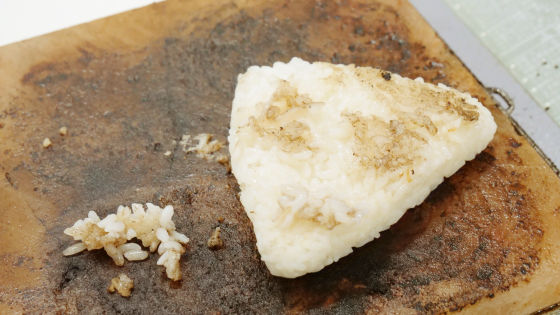
The rock salt plate shone a bright pink, but after being grilled multiple times it took on the appearance of a warrior that had survived many battles...
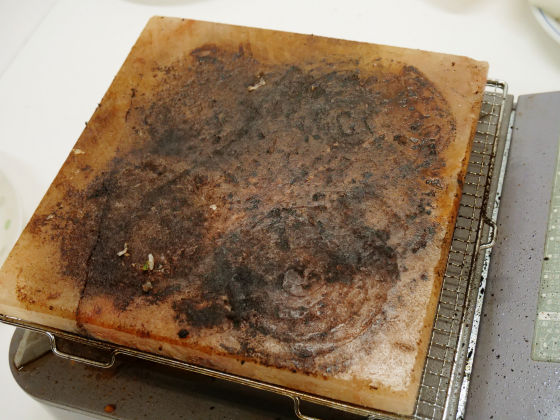
...However, if you scrub it with a cleaner, you can restore the pink to this level.
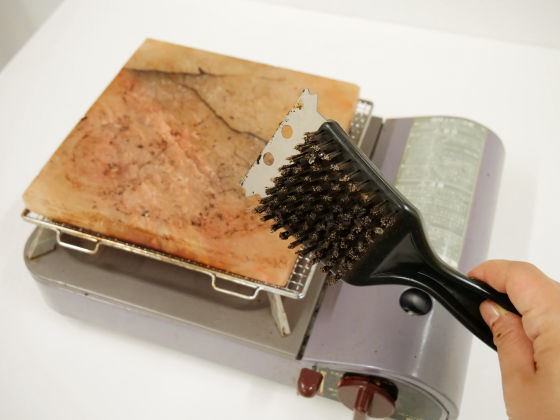
When I turned it over, it was mushy with dripping oil...
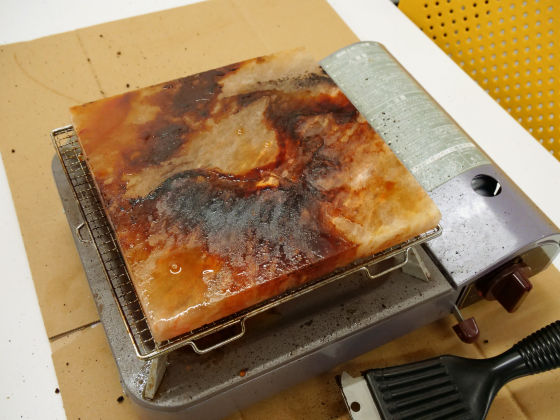
After cleaning, it returned to the original pink color.
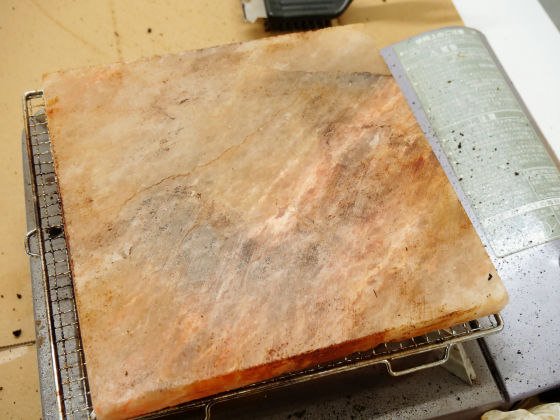
Now that I've come this far, I'm starting to think that if I use a grill, maybe I can heat it well on the stove... so I'll try an experiment...
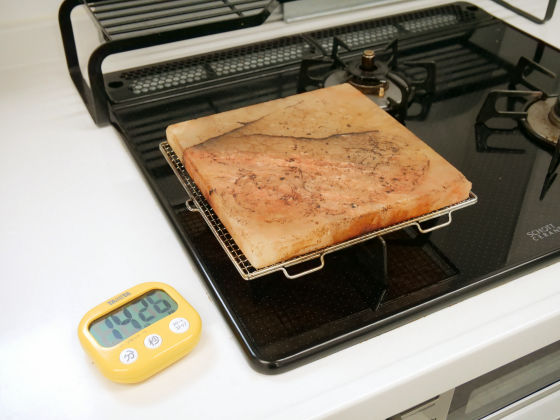
As expected, the temperature sensor reacts when the back side reaches 250 degrees, so the front side does not rise above 200 degrees. However, the editorial stove has a mode that raises the sensor's reaction temperature to 290 degrees under certain conditions, so we tried it and managed to raise it to 240 degrees. This seems to depend on the type of stove and the height of the trivet, so you may have to experiment at home.
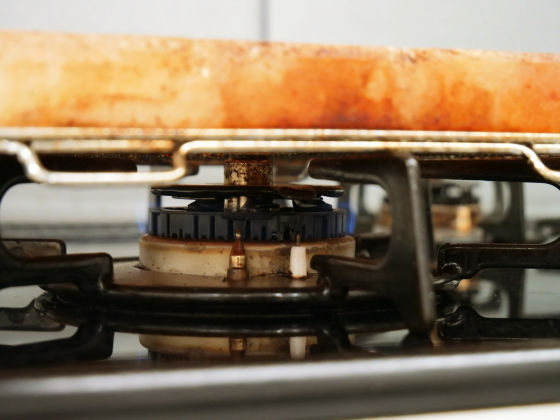
Now that it has been cleaned, I grill some onions and other ingredients in oil to let the flavor blend in.
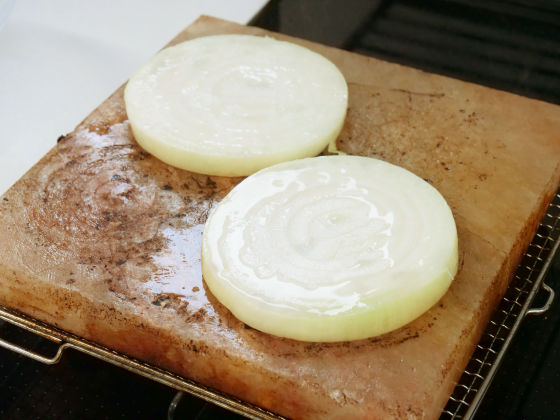
Next, we grilled the Japanese beef sirloin as is. The Australian beef steak was sprinkled with herbs that came with it, but there was a comment that 'the saltiness seems to be overpowered by the herbs...'
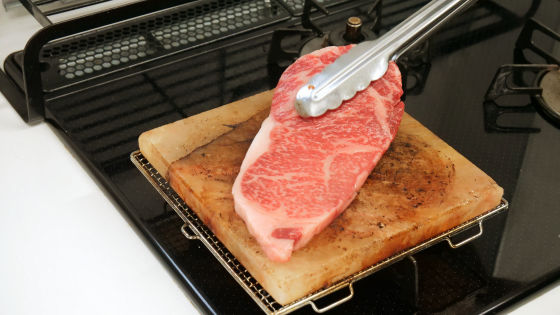
Since it is a thin steak, I cooked it for 1 minute on the front, 1 minute on the back, and then 30 seconds on the back again...
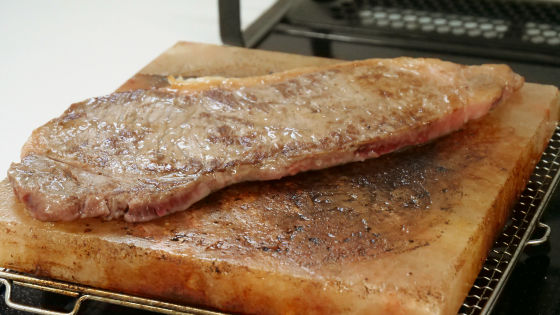
It was a nice medium. The saltiness was also the highest level ever, and the mellow salt brought out the natural flavor of the meat, making it taste like a steak you would eat at a restaurant. In other words, the key points of this rock salt plate were 'don't grill the meat right away, grill some oiled vegetables to let the plate blend in,' 'don't coat the meat in oil,' and 'choose meat that is a little on the thin side.'
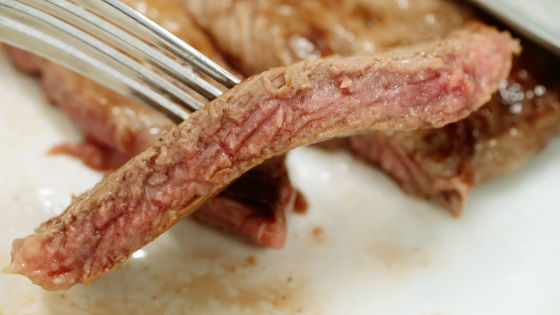
Furthermore, the cleaned rock salt plate was cooled to room temperature in the refrigerator for 30 minutes.
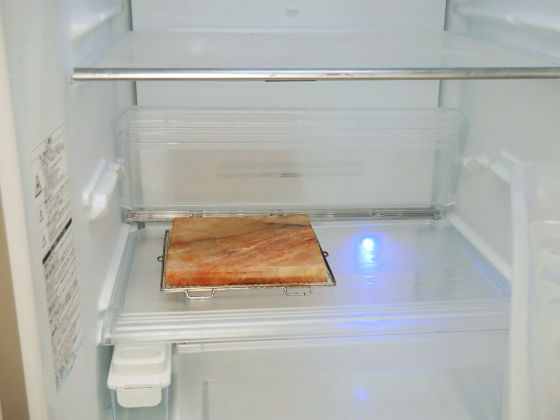
We then cooled it in the freezer for 30 minutes, down to minus 5.3 degrees.
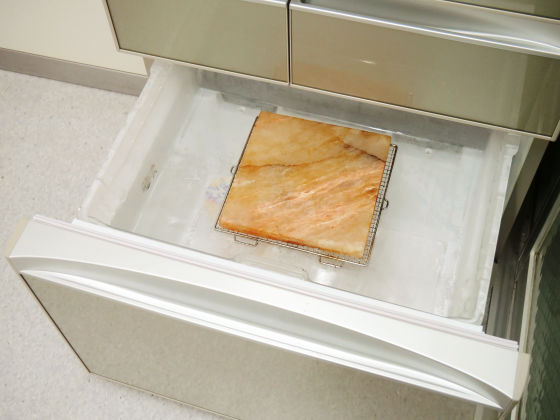
If you put ice cream or fruit in it, it can also be used as a stylish dessert dish. If it is too wet, the ingredients will become saltier, but if you avoid fruits that are high in water, such as pineapple, and eat it immediately after making it, you can enjoy a moderately sweet and salty dessert.
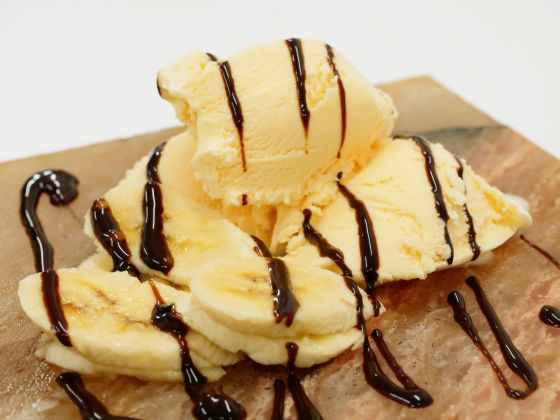
Related Posts:
in Free Member, Video, Review, Tasting, Posted by darkhorse_log







